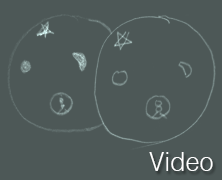Meditation Summary
Meditation involves deliberately holding a person’s attention on a subject, object or process. It may also involve clearing the mind. Results can include feeling more ‘alive’, enhanced feelings of calm and heightened awareness. Meditation offers many health benefits, such as reducing stress, and supporting healing and recovery from accidents.
Meditation of one style or another can be found in most of the major religions, including Christianity, Judaism, Buddhism, Hinduism and Islam. Generally, Eastern religions have tended to concentrate on meditation as a means of realising spiritual enlightenment. This has also included many health-promoting practices.
These days, meditation is practiced for both health and religious reasons, although many people know it most as a self-help tool for promoting good health and managing stress. Meditating for spiritual expansion and fulfilment, without a religious basis, is becoming more common.
Many forms of meditation result in clearing your mind, which promotes a sense of calm and heightened awareness. During meditation, your brain’s activity alters significantly, as shown by a devices such as electroencephalographs (EEG) and magnetic resonance imaging (MRI) equipment.
The most well known brain waves evident during many kinds of meditation are called alpha waves, which accompany relaxation of the entire nervous system and body. Gamma, delta and theta brain waves also accompany some types of meditation and are associated with various altered states of consciousness.
Scientific studies show that the regular practice of meditation can be a powerful healing tool. In fact, there is now clear evidence from studies of long-term meditators that meditation produces profound changes in the brain, and that recovery from some physical and emotional illnesses is assisted by the practice of meditation.
Meditation and disorders
There is a large number of physical, emotional and psychological conditions that are shown by research to be favourably influenced by meditation.
Some disorders that meditation can be used to help include:
- Anxiety
- Chronic pain
- Depression
- Headaches
- High blood pressure
- Insomnia
- Migraines
- Stress
- Life-threatening physical illnesses
- Recovery from accident or illness
- A sense of lack of belonging or purpose.
Benefits of meditation
The direct benefits of meditation can include:
- Improved physical, emotional and mental health
- Focused and clear thinking
- Improved memory
- Enhancing a sense of self and personal presence
- Increased emotional balance
- Greater relaxation and ease
- More equanimity in the face of challenges
- Satisfaction in life
- An improved sense of spiritual fulfilment and awakening.
Calming the nervous system
Resting your mind has a dramatic effect on brain activity. When your brain moves into an alpha wave state, many physiological changes occur, starting with the autonomic nervous system. One of the main roles of the autonomic nervous system is to regulate glands and organs without any effort from our conscious minds.
The autonomic nervous system is made up of two parts, called the sympathetic and the parasympathetic. These systems act in opposite yet complementary ways: the sympathetic nervous system ‘revs up’ the body, while the parasympathetic calms it down. Chronic stress or burnout can occur when the sympathetic nervous system dominates for too long.
During an alpha wave state, the parasympathetic half of the autonomic nervous system comes to the fore. This results in lowered blood pressure and heart rate, a reduction in stress hormones and slowed metabolism. If meditation is practised regularly, these beneficial changes become relatively permanent.
Research combining relatively new technology (magnetic resonance imaging, or MRI) and the talents of long-term meditators has revealed marked changes in both brain function and structure. Finding evidence of these types of changes adds Western scientific validation to many of the claims made by advanced meditators for centuries.
Types of meditation
Meditation has evolved out of numerous approaches to life, religions and philosophies, which means there are many different techniques to choose from. Some examples include:
- Concentrating on the breath – consciously noticing the movement of air in and out of your nostrils, or counting the breath in various ways
- Mindfulness – cultivating awareness of inner experiences (such as bodily sensations, feelings, thoughts and memories) and simply observing them without judgement
- Emptying the mind – allowing the mind to clear and ‘float’, gently pushing aside any stray thoughts, or allowing thoughts to float in and out of awareness
- Looking at an object – focusing your attention, but not necessarily your thoughts, on the shape, sound and texture of an object such as a tree, a candle flame, or a spiritually significant painting or ‘diagram’
- Movement – using a physical technique like yoga, qi gong or tai chi to still the mind by coordinating the breath and the body with gentle movement
- Using a mantra – repeating a word or phrase over and over, either aloud or silently, sometimes timed with the breath, to focus the attention and release different energies that benefit our bodies and minds.
Practising meditation
Whatever your preferred technique, it helps to have a quiet place, a comfortable sitting position and around five minutes to half an hour without outside distractions. Set an alarm if you don’t want to lose track of time.
Contrary to popular belief, you don’t have to sit cross-legged on the floor in order to meditate. You can sit in a chair or sit up in bed. You might just fall asleep, however, if you try to meditate lying down, which defeats the purpose of doing it.
Many people prefer to meditate while moving around. When meditating like this, it is important to make sure that your activities are an expression of inner focus, not a distraction from whatever we are experiencing. The activity is done slowly and attentively.
Examples include walking, swimming or doing something repetitive that is not distracting (such as washing dishes, digging in the garden or sweeping). The activity is not the purpose – it is a means of focusing and holding attention on inner processes.
Meditating every day at around the same time can help you develop a regular habit and make it easier and quicker to slip into deeply meditative states. You can master many meditation practices by yourself. However, some people prefer to attend classes and learn in a group from an experienced teacher, and there are certainly many benefits from doing this.
Trying too hard to meditate
Trying to meditate is a lot like trying to sleep – attempting to force it can often make it more difficult. Thinking of a meditation session as a chance to relax rather than as a discipline you have to master, can make a great difference.
If your attention wanders, practice acceptance and avoid getting annoyed with yourself. Simply direct your attention back to what you are doing and your experience of that moment.
Special considerations
With serious mental illness, meditation should be used under expert guidance, and if done alone, extreme caution should be exercised.
When meditating without guidance, it is important to remember that meditation is part of living a balanced life – using it to withdraw from life or to not deal with personal and practical issues is to be avoided.
Where to get help
- Your doctor
- Yoga, kum nye, qi gong and tai chi teachers
- Meditation teachers.
Things to remember
- Meditation is the deliberate focusing of attention to bring about feelings of calm, and heightened energy and awareness.
- Regular meditation offers many health benefits, such as reduced stress, healthy blood pressure and enhanced healing.
- There are many different ways to meditate, such as using a mantra, looking at an object, or focusing on the breath. It can be done sitting still or moving around while gaining self-aware attention.
To view the original article: Better Health Channel



